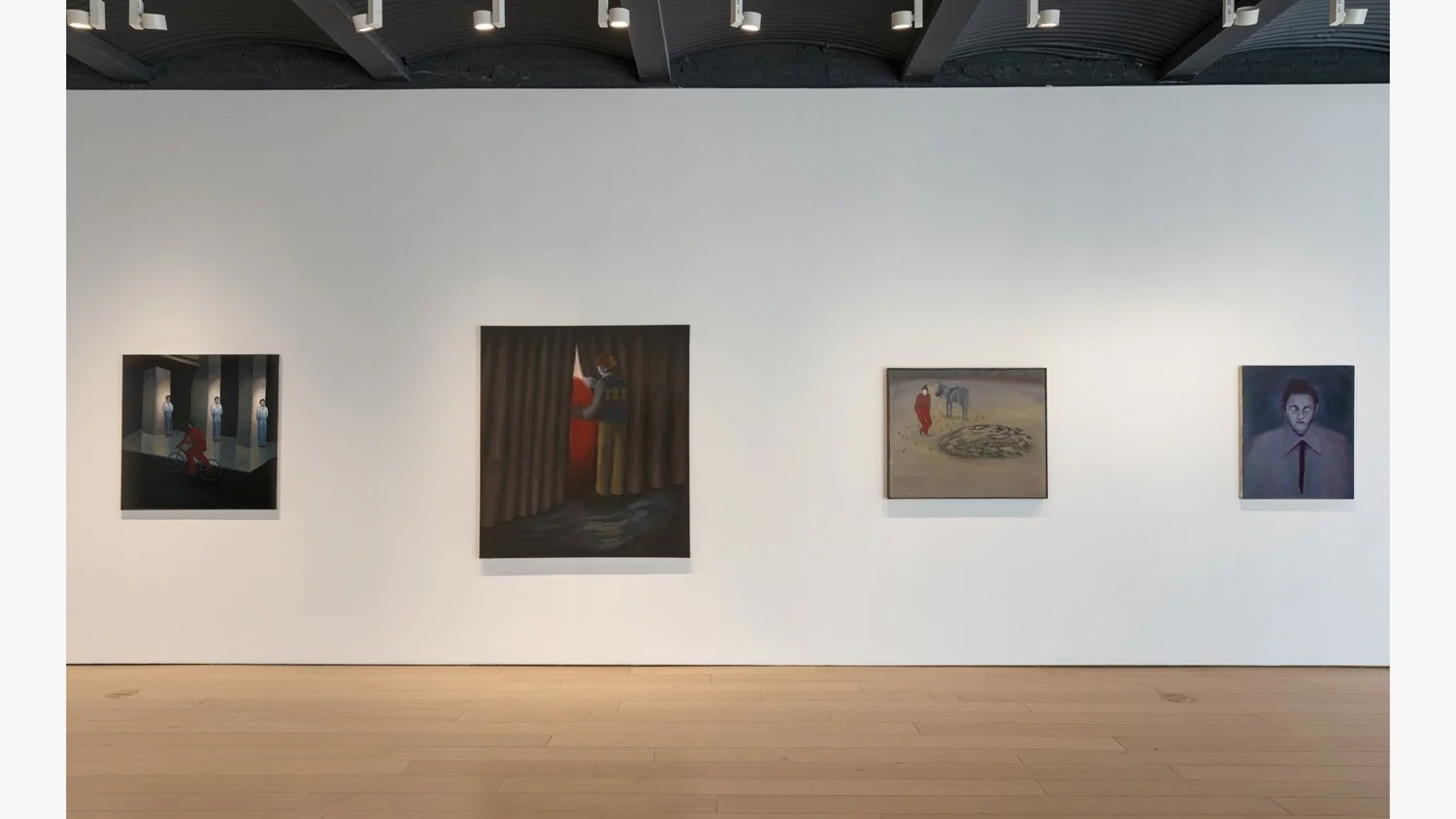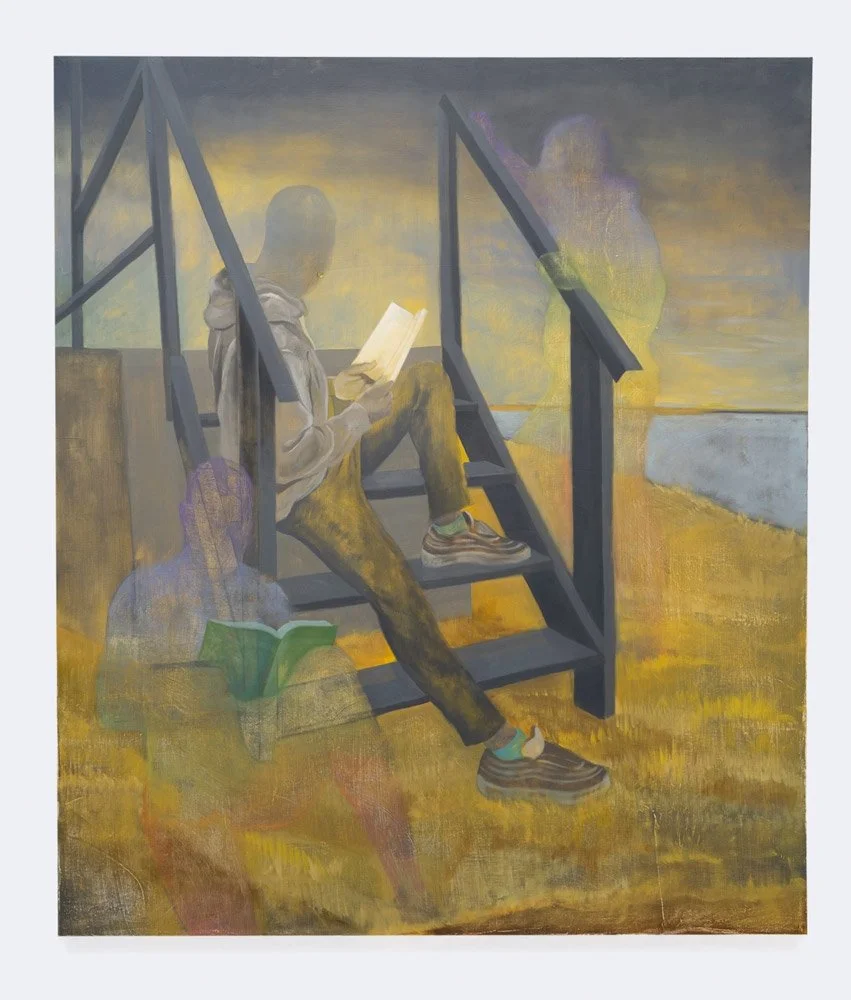Lyn Liu
“Dogville”
Kasmin
New York, 509 WEST 27TH STREET
Liu’s work addresses the psychological tension underpinning relationships between individuals through a sequence of uncanny cinematic tableaux. Comprised of paintings realized between 2019–2022, the exhibition draws from the artist’s personal experiences of alienation, utilizing symbolism and an atmosphere of the absurd to provoke reflections on what Liu considers our oppressive social reality. This is the artist’s first solo exhibition.
Installation view of Lyc Liu. Photography by Christopher Stach
Conceiving of her compositions as stills in an overarching though dislocated narrative, the artist takes a filmic approach to considerations of light, staging, and costume. Depicting scenes often situated in the evening or at night, Liu’s tightly rendered dreamscapes feature figures whose identities are concealed, masked, presented alongside a doppelganger, or hidden in shadow. This voyeurist instinct—a longing to see without being seen—acts both as a visual strategy and a window into the artist’s experience as a child, when she traveled between cultures feeling like a perpetual outsider.
The striking symbols in Liu’s paintings pulsate with a nihilist or existentialist philosophy in the vein of Albert Camus and Franz Kafka, whose work the artist has referenced throughout her oeuvre. In Huggermugger (2022), a rotund, diamond-patterned structure conceals the identity of two bartenders who offer glasses of what might be champagne yet carry the risk of poison. Liu’s interest in the book The Architectural Uncanny by Anthony Vidler further elaborates on the metaphorical potential of buildings and interiors in the work to speak to our modern condition.
The artist repeatedly returns to animal subjects as counterparts to her human figures, such as in Conference and Cherry Pie (both 2019). Recognizing both wild and domesticated animals as unknowable, unpredictable, and potentially dangerous, Liu’s use of ostriches, frogs, and kangaroos as symbols occasions a fissure between the cycle of mutual observation found in human society. Employed here, they act to highlight the confusion of spectacle and the sense of alienation that can attend a condition of being observed.







